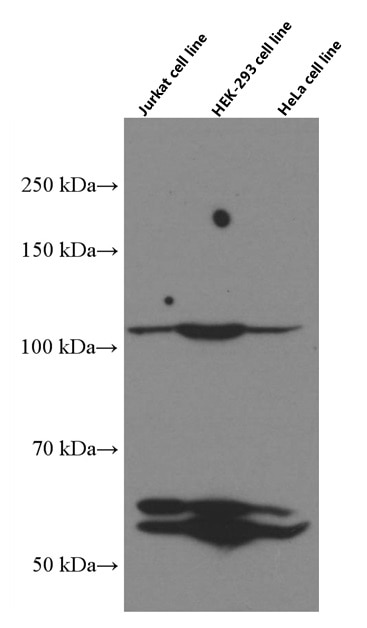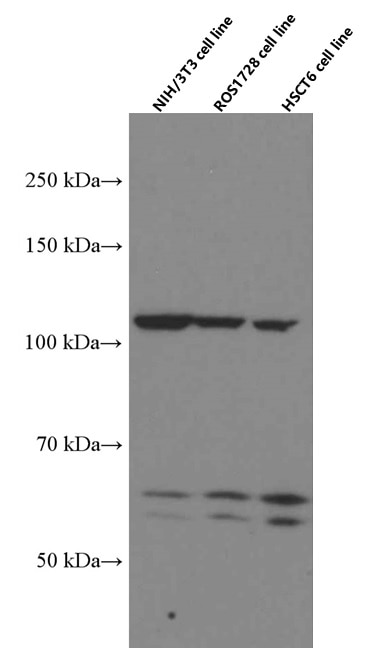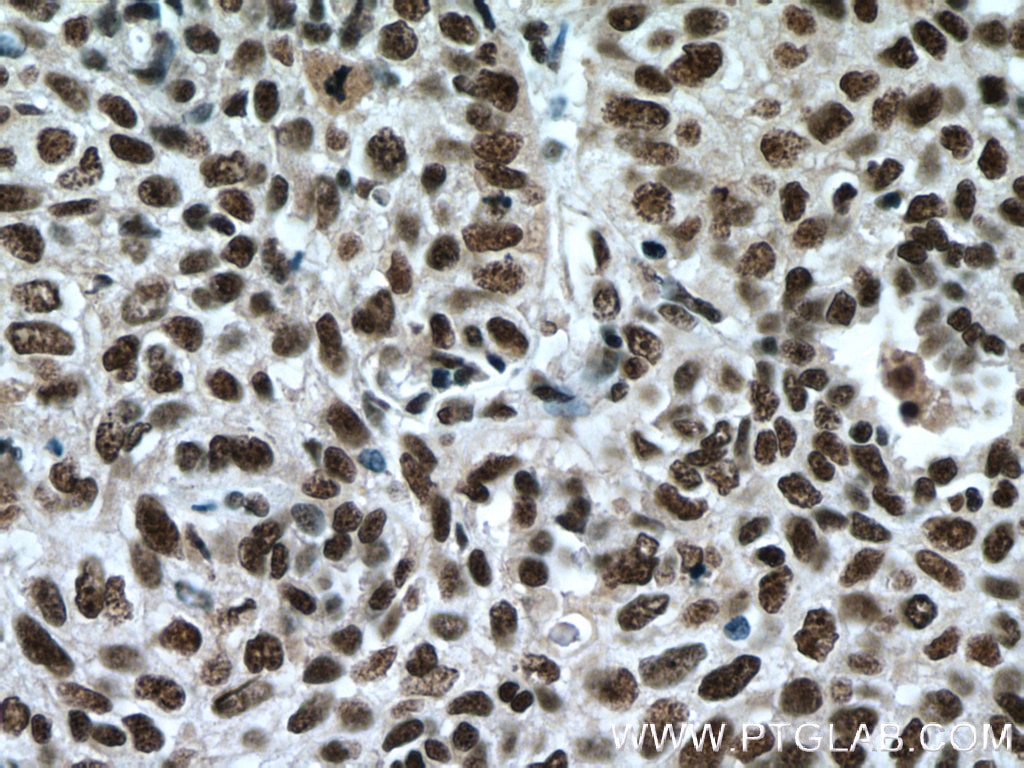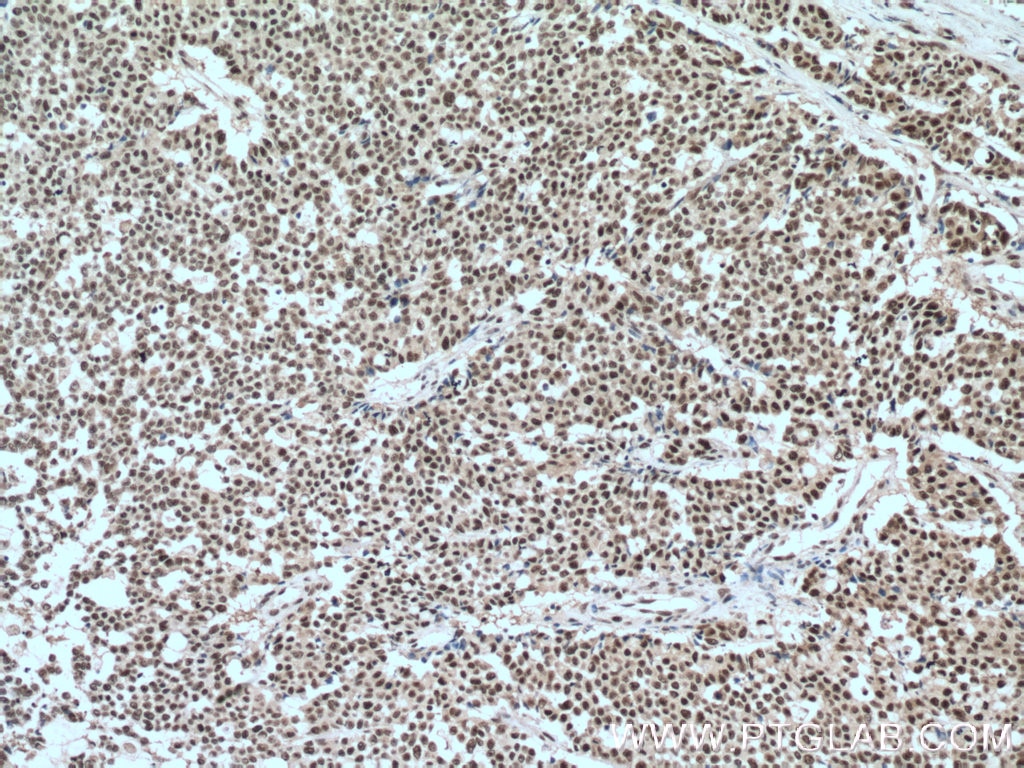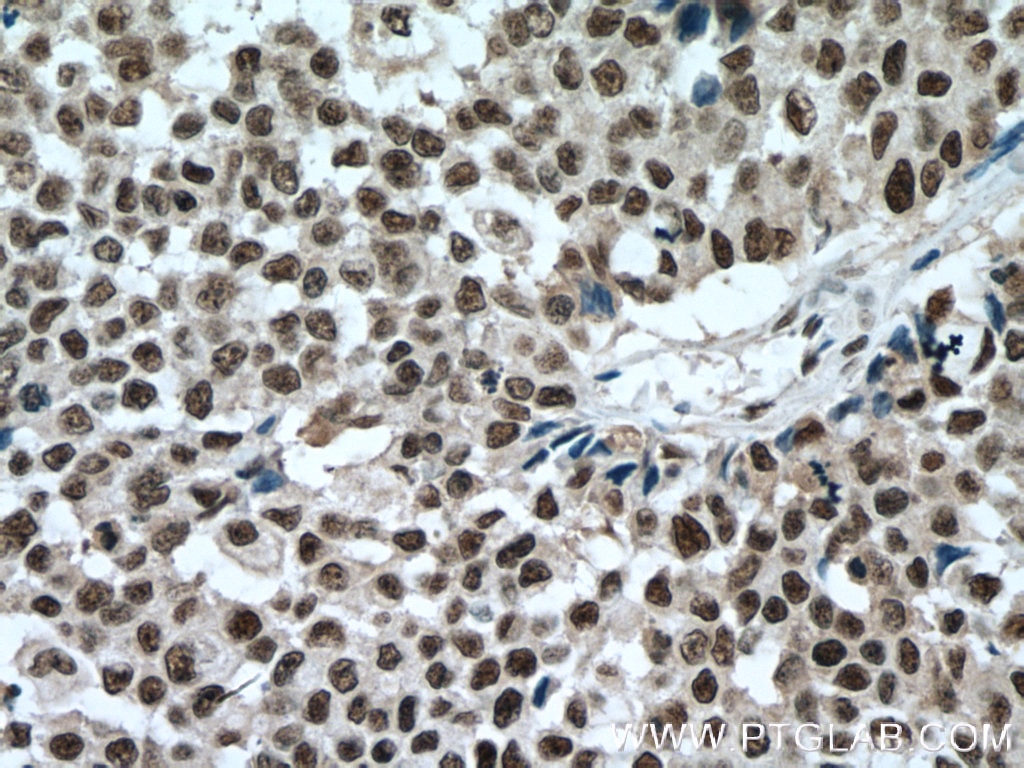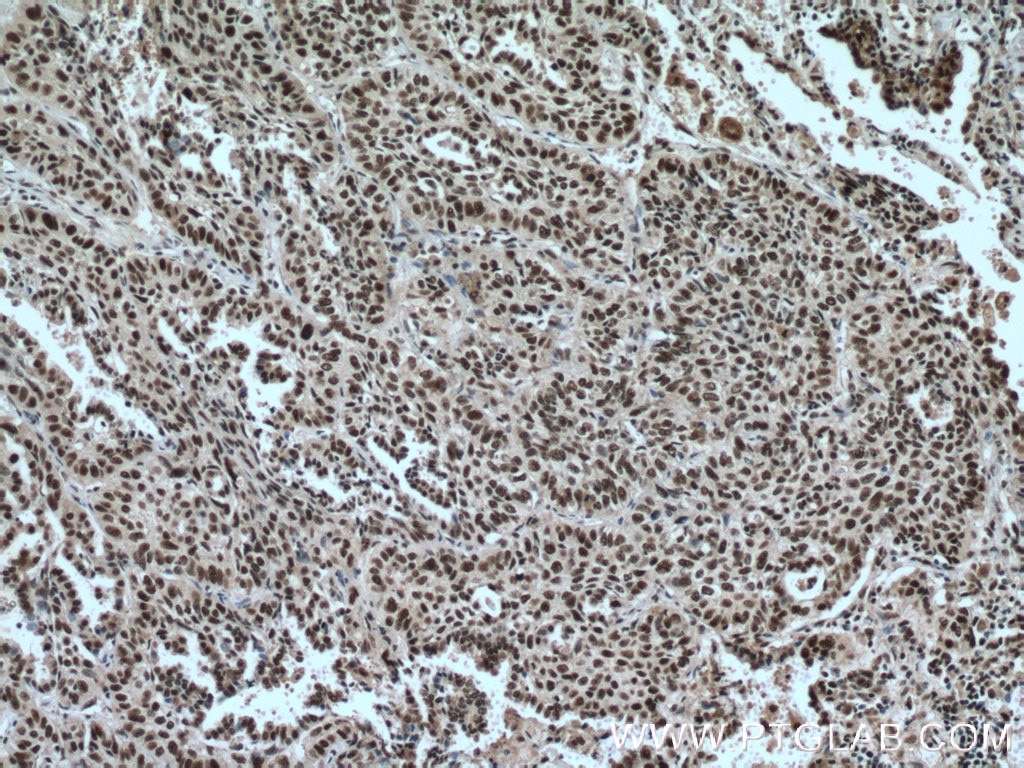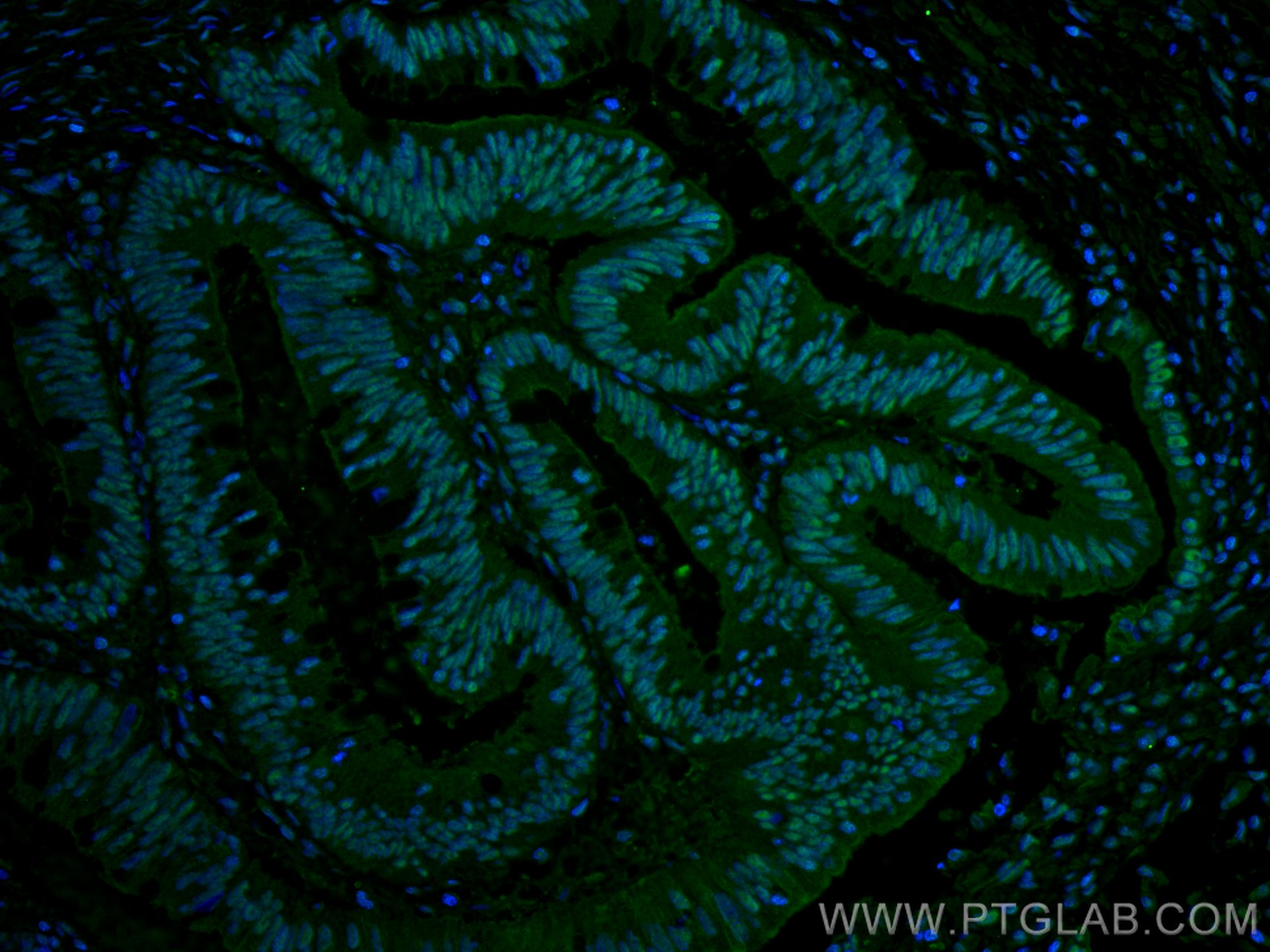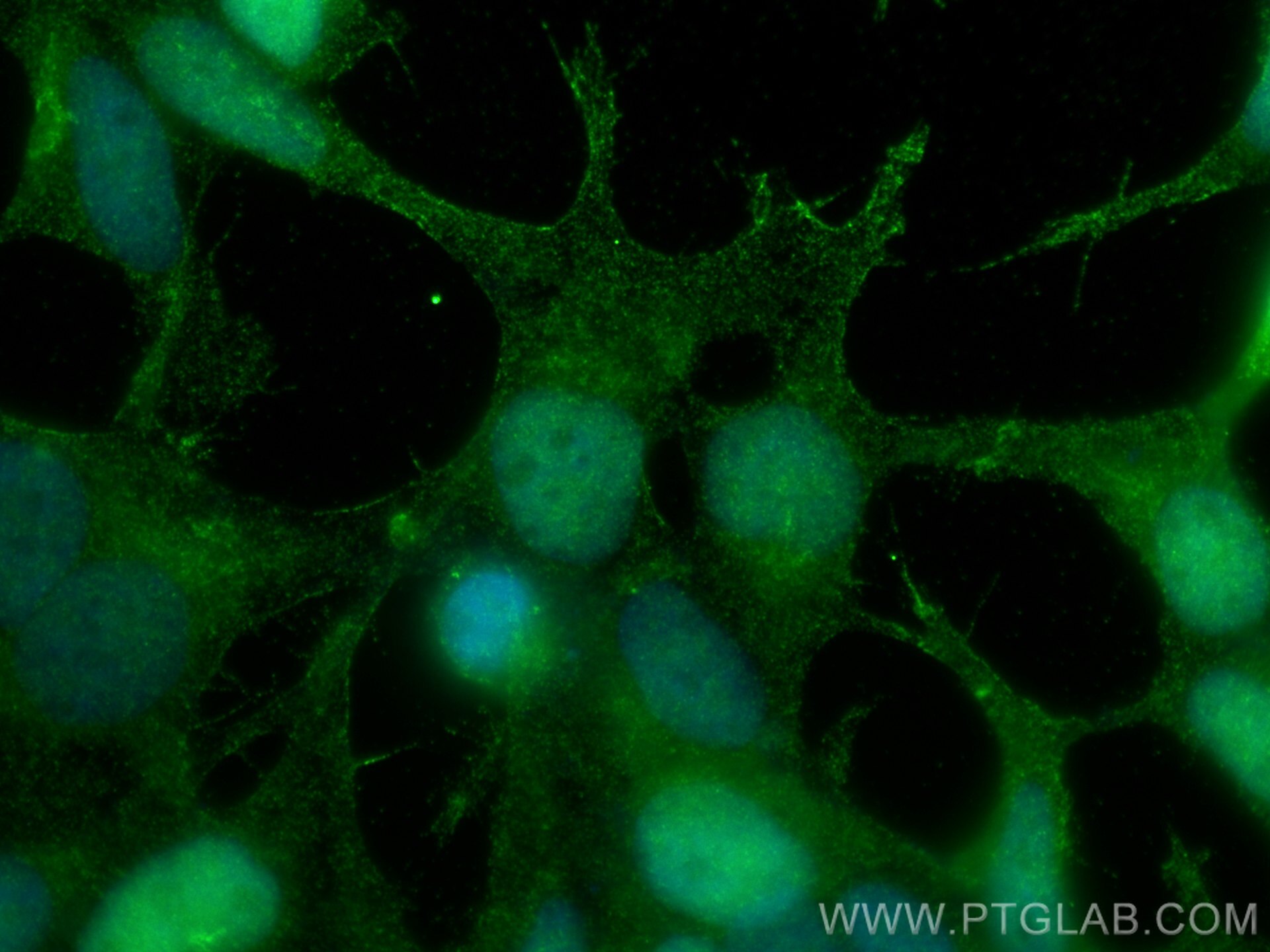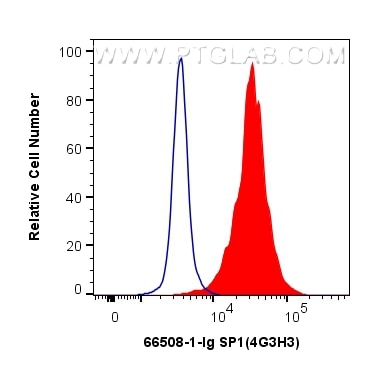Validation Data Gallery
Tested Applications
| Positive WB detected in | Jurkat cells, NIH/3T3 cells, HEK-293 cells, HeLa cells |
| Positive IHC detected in | human lung cancer tissue, human colon cancer tissue Note: suggested antigen retrieval with TE buffer pH 9.0; (*) Alternatively, antigen retrieval may be performed with citrate buffer pH 6.0 |
| Positive IF-P detected in | human colon cancer tissue |
| Positive IF/ICC detected in | HEK-293 cells |
| Positive FC (Intra) detected in | HEK-293 cells |
Recommended dilution
| Application | Dilution |
|---|---|
| Western Blot (WB) | WB : 1:1000-1:6000 |
| Immunohistochemistry (IHC) | IHC : 1:175-1:700 |
| Immunofluorescence (IF)-P | IF-P : 1:50-1:500 |
| Immunofluorescence (IF)/ICC | IF/ICC : 1:400-1:1600 |
| Flow Cytometry (FC) (INTRA) | FC (INTRA) : 0.40 ug per 10^6 cells in a 100 µl suspension |
| It is recommended that this reagent should be titrated in each testing system to obtain optimal results. | |
| Sample-dependent, Check data in validation data gallery. | |
Published Applications
| WB | See 4 publications below |
| IHC | See 1 publications below |
| IF | See 1 publications below |
Product Information
66508-1-Ig targets SP1 in WB, IHC, IF/ICC, IF-P, FC (Intra), ELISA applications and shows reactivity with human, mouse, rat samples.
| Tested Reactivity | human, mouse, rat |
| Cited Reactivity | human, mouse, rat |
| Host / Isotype | Mouse / IgG1 |
| Class | Monoclonal |
| Type | Antibody |
| Immunogen | SP1 fusion protein Ag16720 相同性解析による交差性が予測される生物種 |
| Full Name | Sp1 transcription factor |
| Calculated molecular weight | 785 aa, 81 kDa |
| Observed molecular weight | 95-105 kDa, 60-65 kDa |
| GenBank accession number | BC062539 |
| Gene Symbol | SP1 |
| Gene ID (NCBI) | 6667 |
| ENSEMBL Gene ID | ENSG00000185591 |
| RRID | AB_2881871 |
| Conjugate | Unconjugated |
| Form | Liquid |
| Purification Method | Protein A purification |
| UNIPROT ID | P08047 |
| Storage Buffer | PBS with 0.02% sodium azide and 50% glycerol , pH 7.3 |
| Storage Conditions | Store at -20°C. Stable for one year after shipment. Aliquoting is unnecessary for -20oC storage. |
Background Information
The transcription factor Sp1 is a C2H2 zinc-finger protein that is involved in the regulation of a wide variety of genes, including housekeeping genes and tumor-developing genes. It is associated with tumor development, growth, and metastasis [PMID: 16209919]. It regulates the expression of a large number of genes involved in a variety of processes such as cell growth, apoptosis, differentiation and immune responses. Besides, it has a role in modulating the cellular response to DNA damage, recruiting SMARCA4/BRG1 on the c-FOS promoter, regulation of FE65 gene expression [PMID:11371615,16332679]. SP1 has some isoforms with MW ~95-106 kDa and ~60 kDa [PMID:17462816].
Protocols
| Product Specific Protocols | |
|---|---|
| WB protocol for SP1 antibody 66508-1-Ig | Download protocol |
| IHC protocol for SP1 antibody 66508-1-Ig | Download protocol |
| IF protocol for SP1 antibody 66508-1-Ig | Download protocol |
| FC protocol for SP1 antibody 66508-1-Ig | Download protocol |
| Standard Protocols | |
|---|---|
| Click here to view our Standard Protocols |
Publications
| Species | Application | Title |
|---|---|---|
Br J Pharmacol Sarco/endoplasmic reticulum Ca 2+ -ATPase 2b mediates oxidation-induced endoplasmic reticulum stress to regulate neuropathic pain | ||
Evid Based Complement Alternat Med Guifu Dihuang Pills Ameliorated Mucus Hypersecretion by Suppressing Muc5ac Expression and Inactivating the ERK-SP1 Pathway in Lipopolysaccharide/Cigarette Smoke-Induced Mice | ||
Endocrinology AURKA enhances the glycolysis and development of ovarian endometriosis through ERβ | ||
Acta Biochim Biophys Sin (Shanghai) Propofol protects against high glucose-mediated endothelial injury via inhibition of COX2 and iNOS expressions | ||
Genomics STRIP2 is regulated by the transcription factor Sp1 and promotes lung adenocarcinoma progression via activating the PI3K/AKT/mTOR/MYC signaling pathway | ||
EMBO Rep Histone modifications and Sp1 promote GPR160 expression in bone cancer pain within rodent models |
